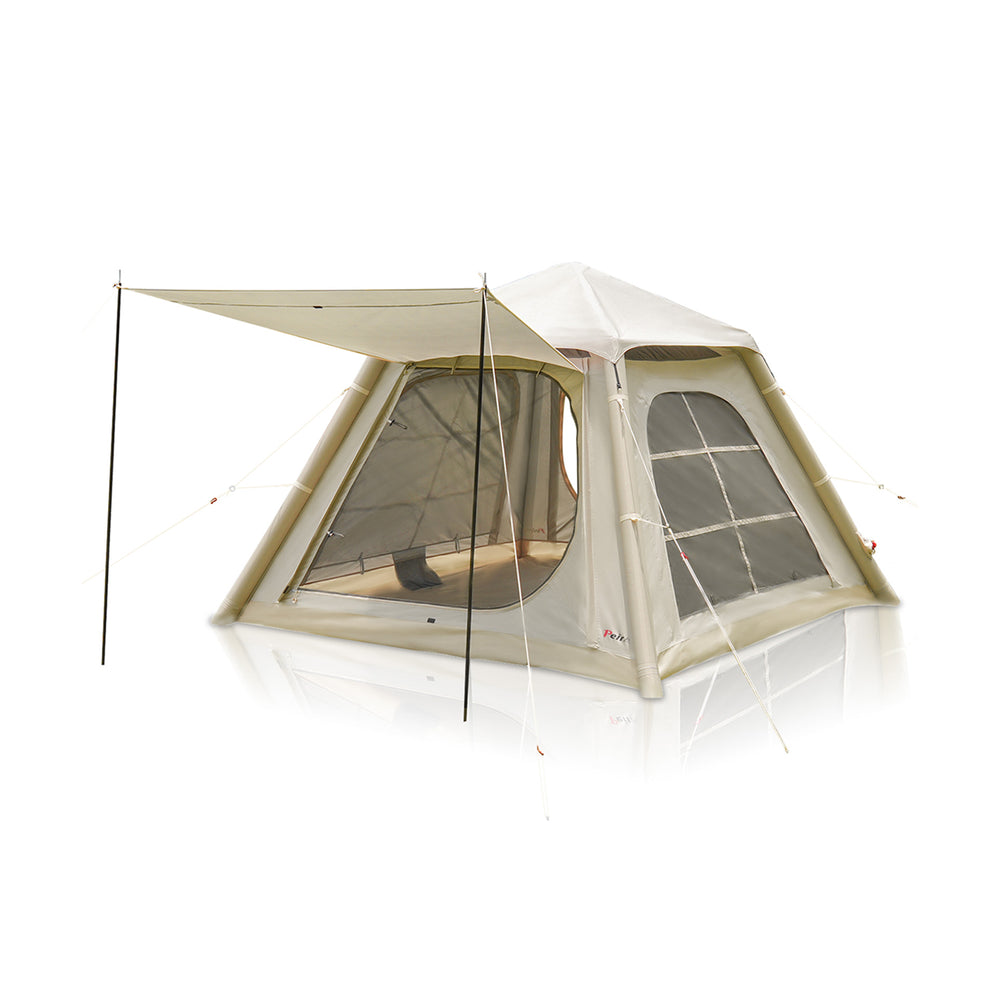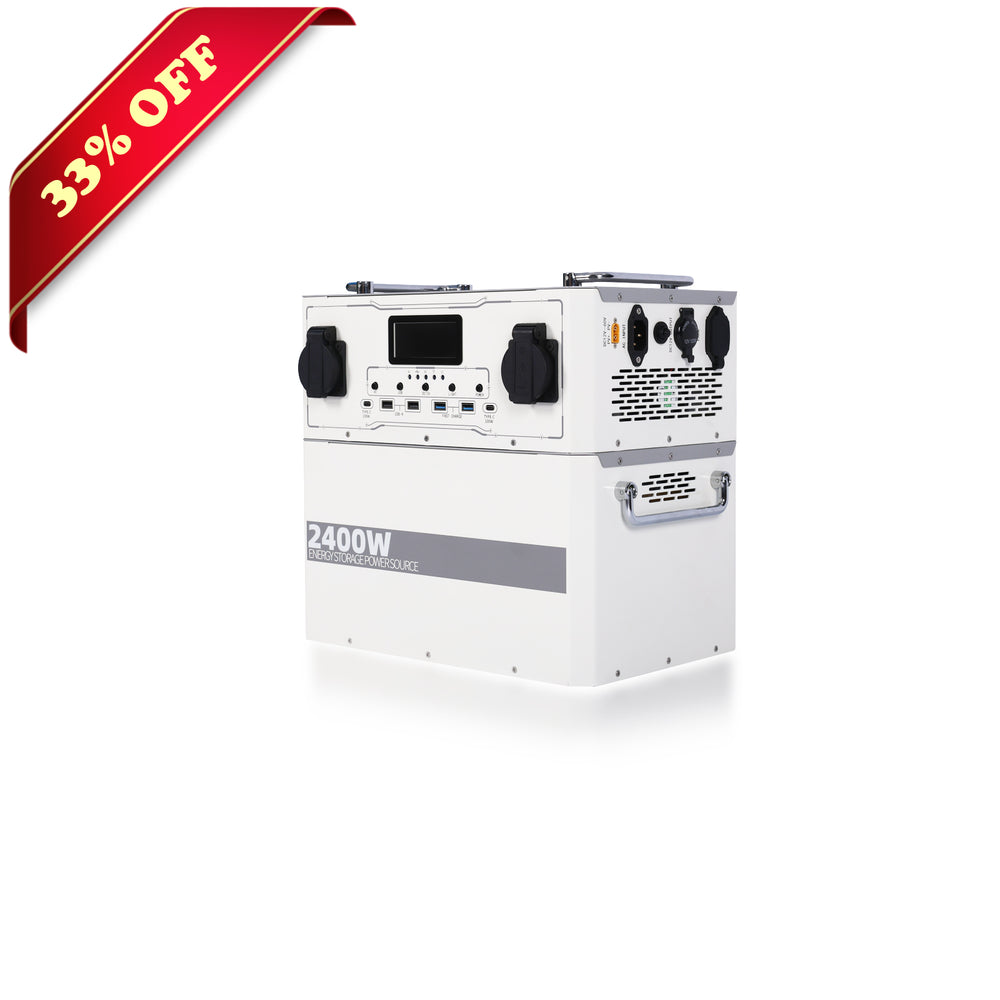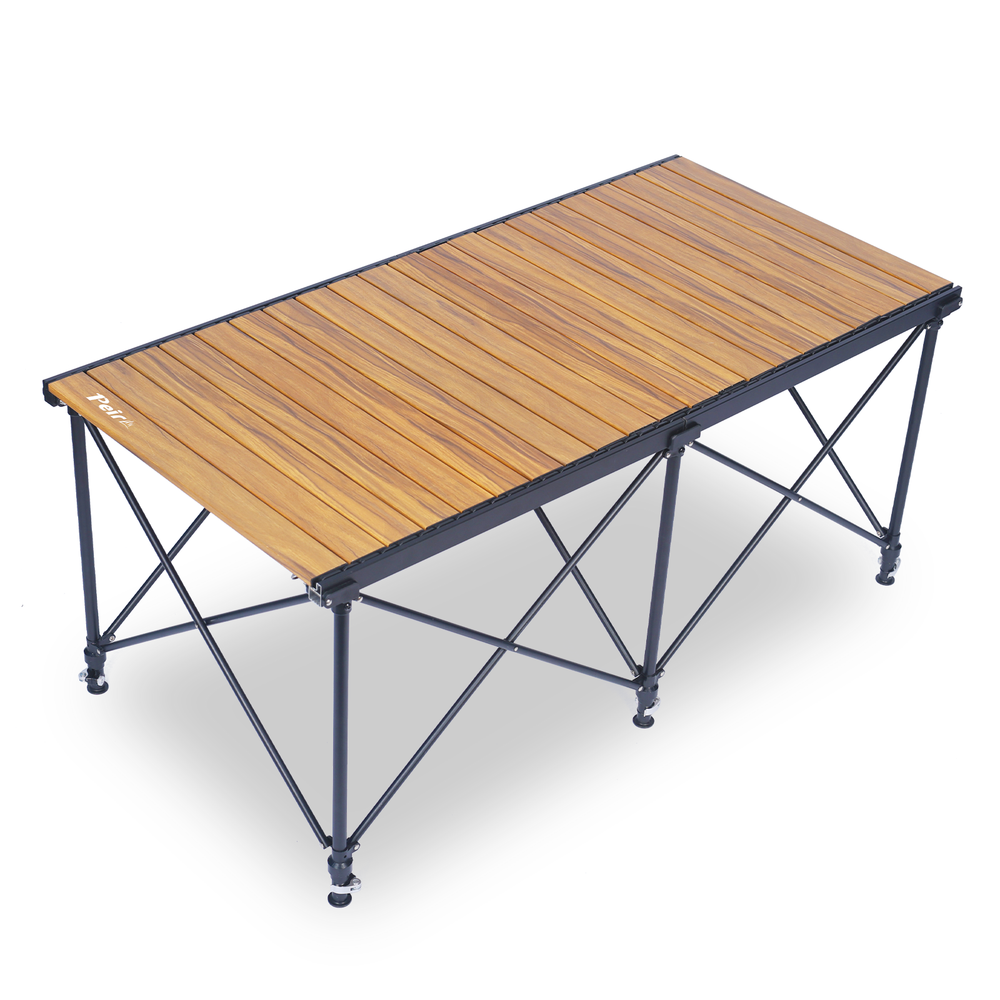1. How to choose a sleeping bag
A good night's sleep is essential for a good night's camping or bivouac experience, so it's important to consider which sleeping bag is best for the activities you're going to do and the environment you're going to be moving around in. To make the right choice, you'll need to take several things into account.
- What activity are you going to do?
- What season or weather do you expect?
- Are you going to carry the bag on your back?
Are you about to go on a week-long hike from hut to hut? Or are you loading up your campervan for a trip to the coast? Are you going backpacking through southern Europe? Or heading straight to the Alps? The answers to these questions are important in selecting the temperature range, type of insulation and shape of the sleeping bag you choose, so it's important to study them carefully.
2. How to choose a sleeping bag for camping
For camping trips where you're traveling in some kind of vehicle, such as a camper van, car, train, or bus, you may want to focus more on comfort than on the bag's weight or volume.
As a camping bag doesn't have to be one you have to carry around, it can be thicker, heavier, and bulkier.
Tips:
- Remember to check what the temperature is likely to be at night where you're going.
- Always go for a bag that's warmer than you might need.
- When weight isn't an issue, it's easier to open it up to cool it down than to warm it up, especially if it's cold.
3. How to choose a sleeping bag for alpine hiking or backpacking
If you're going hiking or backpacking, everything you need has to fit in your backpack and you'll have to carry it on your back. In this case, space and weight are key factors when deciding what to bring. While a camping sleeping bag can be effective enough for backpacking trips, they tend to take up more space and weigh more.
It's best to go for a bag that is:
- lightweight;
- compact/packable;
- and offers a good warmth-to-weight ratio.
4. How to choose the right bag shape
Sleeping bags come in many shapes and sizes. Choosing the right design will depend on factors like your personal preferences (how you like to sleep) and the activity you're doing (whether or not weight is a consideration). It can also depend on who you're traveling with and whether you're using double sleeping bags.
For example, a rectangular sleeping bag will be larger and heavier than a mummy-style sleeping bag. Since sleeping bags retain body heat, the narrower it is, the better it will retain heat.
Conversely, the roomier it is, the more heat or energy is needed to warm it, and the less efficient it will be at retaining heat. So you need to think carefully about how important these factors are for what you have in mind.
4.1. Mummy-style
This type of bag has a tight fit, which conforms to the shape of the body, and a contoured hood. This shape reduces the overall weight of the bag and offers a more effective type of insulation, as there are no gaps between your body and the fabric to be heated.
4.2. Rectangular
Bags with this shape offer more space when sleeping, so you can enjoy an experience more similar to sleeping in your own bed. They can be opened like a blanket, which is why they are a good choice for motorhome trips. However, on the other hand, they are bulkier and heavier.
4.3. Semi-rectangular
This shape is the middle ground between mummy bags and rectangular bags, as it offers more room to move and retains heat better.
4.4. Double sleeping bag or with zippers to connect them
Some sleeping bags have zippers that can be joined together to form one for two people, which is known as a double sleeping bag. The advantage in this case is that you can share the heat.
5. What material should my sleeping bag be made of?
Down or synthetic? This is the million-dollar question. Should I buy a sleeping bag filled with synthetic fiber or one filled with natural down? As always, both options have advantages and disadvantages.
5.1. Advantages of down filling
- Excellent warmth-to-weight ratio
- Highly compressible
- Restores structure when unfolded
- Retains insulation performance for years
These characteristics make down the best choice for dry, cold conditions and for year-round use. But if you're going to be exposed to wet conditions more often, it's best to consider a bag filled with synthetic fiber.
Please note: Peirhw only uses down that meets the Responsible Down Standard (RDS) certification. This standard guarantees that all our down comes from ducks and geese that have been treated responsibly according to high animal welfare standards without live plucking.
5.2. Advantages of synthetic fill
- More affordable
- Retains insulation performance even when wet
- Dries quickly
The outer and liner material of sleeping bags is often made from lightweight synthetic fabrics with ripstop properties. In wetter conditions, sleeping bags with a durable water repellent (DWR) finish are a good choice, especially around the foot and head areas, which are more likely to come into contact with condensation.
6. How to choose the right temperature range for a sleeping bag
All sleeping bags come with a temperature range as an indication of what kind of atmospheric temperature they will keep you in.
Some come with a seasonal indicator to show insulation performance, i.e. single season, dual season, summer or winter, etc. But most have adopted an ISO (International Standards Organization) system for testing temperature.
While these are merely guidelines, there are also other factors that alter how warm you feel inside your bag. Everyone experiences cold in their own way, so you need to know your personal sensitivity levels. Once you've figured out the lowest temperature you can expect to encounter on your trip or adventure, you'll know which temperature range to go for.
6.1. Sleeping bag temperature ranges:
- Comfort temperature: Indicates the lower limit temperature at which a standard individual who tends to get cold at night can sleep comfortably.
- Lower limit temperature: Indicates the lower limit temperature at which a standard individual who tends to get hot at night can sleep comfortably. A person may need to put on extra layers of clothing to keep warm at this temperature.
- Extreme temperature: Indicates the lower temperature that a standard individual can tolerate for six hours in extreme cold. We're not talking about sleeping comfortably here. At this temperature, the person will be cold all the time, but it will reduce the likelihood of hypothermia.
As a point of reference, if you tend to get hot at night, you can look at the lower limit range, and if you tend to get cold, look at bags with the "comfort" range.
7. How to choose a sleeping bag size
Sleeping bags come in a variety of sizes and lengths to suit most people. It's important to find the bag that suits your height.
- If it's too short, your head and feet will press against the hood and bottom, compressing the insulation and affecting performance.
- If it's too long, you'll need more energy to heat the empty areas and you'll have to carry the extra weight. Many manufacturers offer a range of sizes.
8. What features to consider?
In addition to the shape, fill material, temperature range, and length of the sleeping bag, there are several features to consider depending on the activity you plan to do and the environment where you will be sleeping.
- A durable water repellent (DWR) finish can be useful in more humid climates or if you are sleeping in a tent. It is best if this type of finish is PFC-free, meaning it is made without perfluorocarbons, a harmful chemical.
- Double sleeping bags come with zippers that allow you to join two different bags together to create a double, where you can share warmth. These can be either rectangular or mummy-style. But make sure that the bag you want to connect has a zipper that is compatible with the other bag.
- The compression bag helps compress the bag so that it takes up less space in your backpack. Important: Never store your sleeping bag in a compression bag. It is best to store it in a large, airy bag, so that the filling does not compress.
- The zipper in the foot area is useful for using the bag as a blanket, for example to throw over yourself around a campfire, or for airing out at night if necessary.
- A functionally cut hood with an easy-to-use adjustable drawstring is ideal for increasing thermal efficiency.
- An insulating tube behind the zipper prevents warm air from escaping through the zipper, and the thermal collar also prevents heat loss from the bag.
- A good quality zipper with an anti-snag flap will prevent the zipper teeth from catching on the outer fabric or lining.
- A pocket inside the bag for storing small valuables, such as a watch or headlamp.
Note: To keep your sleeping bag clean for longer and to quickly add extra warmth, you can use a sleeping bag liner (see also section: How to wash a sleeping bag)












 Peirhw Inflatable House Tent - Starry Night Love
Peirhw Inflatable House Tent - Starry Night Love
 Peirhw Glamping Tents - Friendship Castle
Peirhw Glamping Tents - Friendship Castle
 Peirhw Inflatable Canopy Tent - Adventurer
Peirhw Inflatable Canopy Tent - Adventurer



 Peirhw Portable Air Conditioner
Peirhw Portable Air Conditioner
 【Advance Sale】Peirhw Portable Power Station 2400W
【Advance Sale】Peirhw Portable Power Station 2400W
 【Advance Sale】Peirhw Portable Power Station 600W
【Advance Sale】Peirhw Portable Power Station 600W





 Peirhw Self Inflating Sleeping Pad
Peirhw Self Inflating Sleeping Pad
 Peirhw Air Mattress (8" Queen Type)
Peirhw Air Mattress (8" Queen Type)
 Peirhw Camping Sleeping Bag
Peirhw Camping Sleeping Bag


 Peirhw Butterfly-shaped Canopy for Camping
Peirhw Butterfly-shaped Canopy for Camping
 Peirhw Camping Waterproof Canopy (Cannot be Purchased Separately)
Peirhw Camping Waterproof Canopy (Cannot be Purchased Separately)


 Peirhw Outdoor Folding Chairs
Peirhw Outdoor Folding Chairs
 Peirhw Folding Camping Table
Peirhw Folding Camping Table












